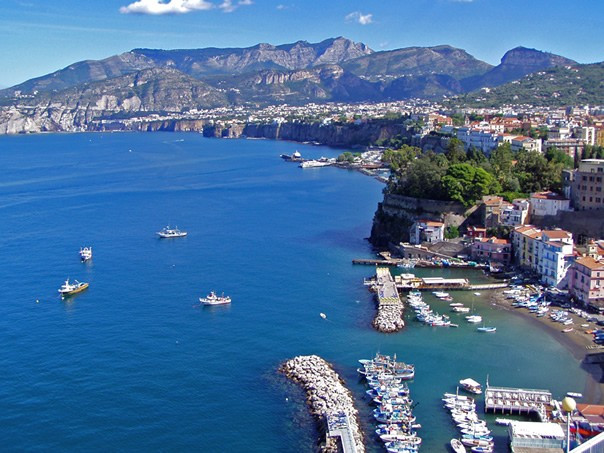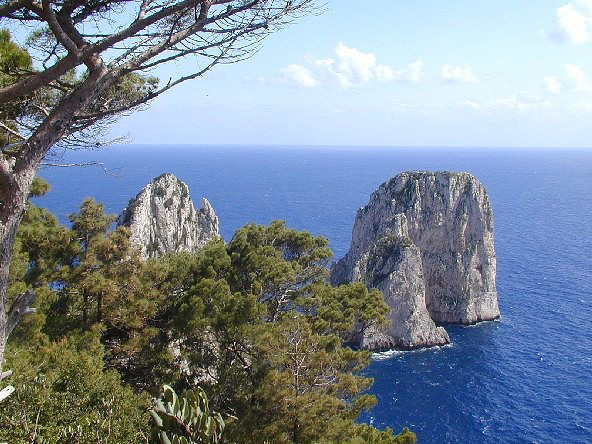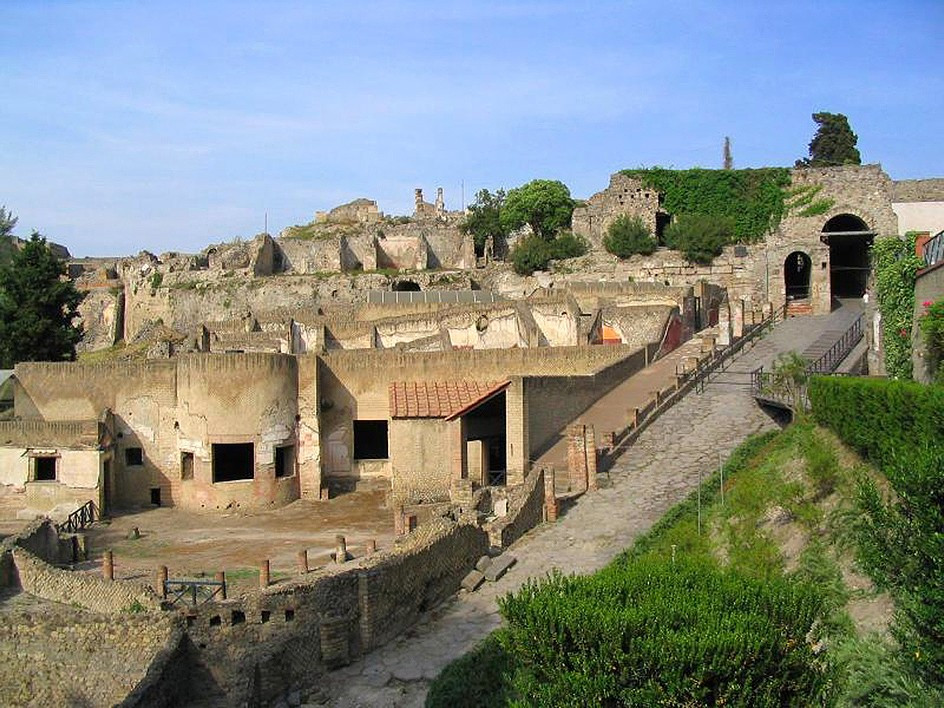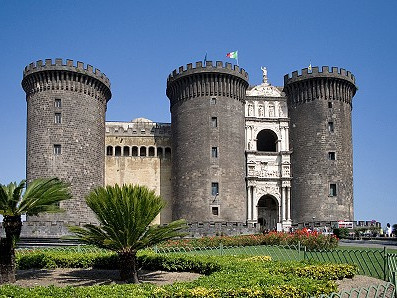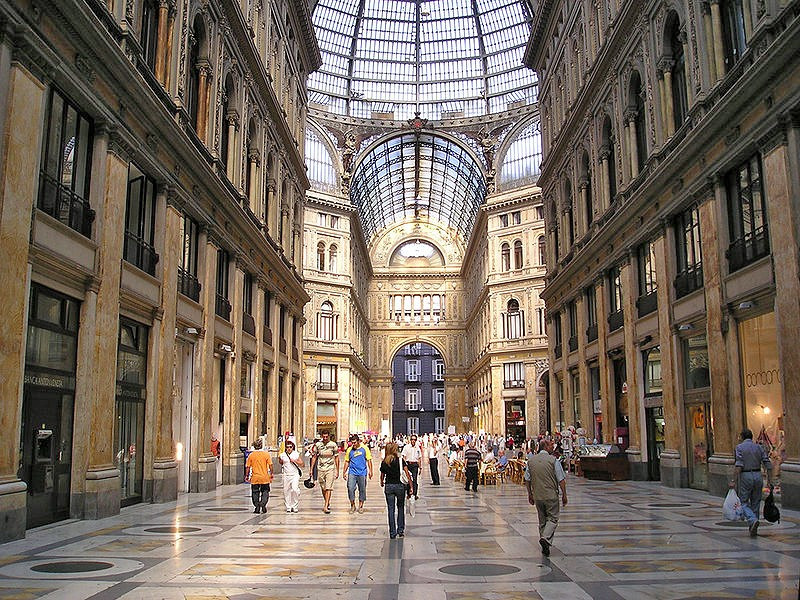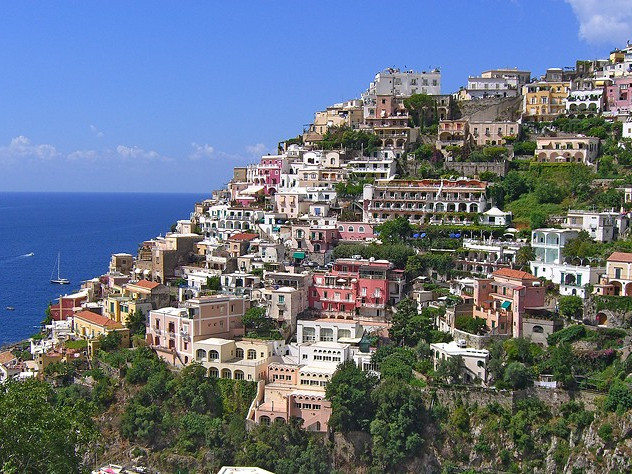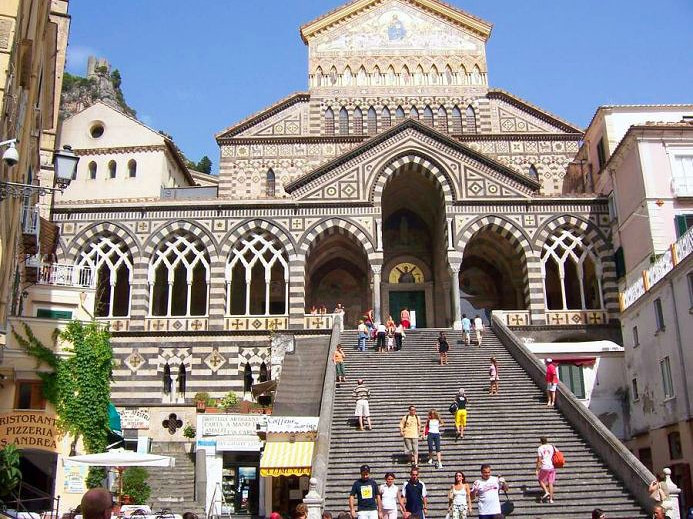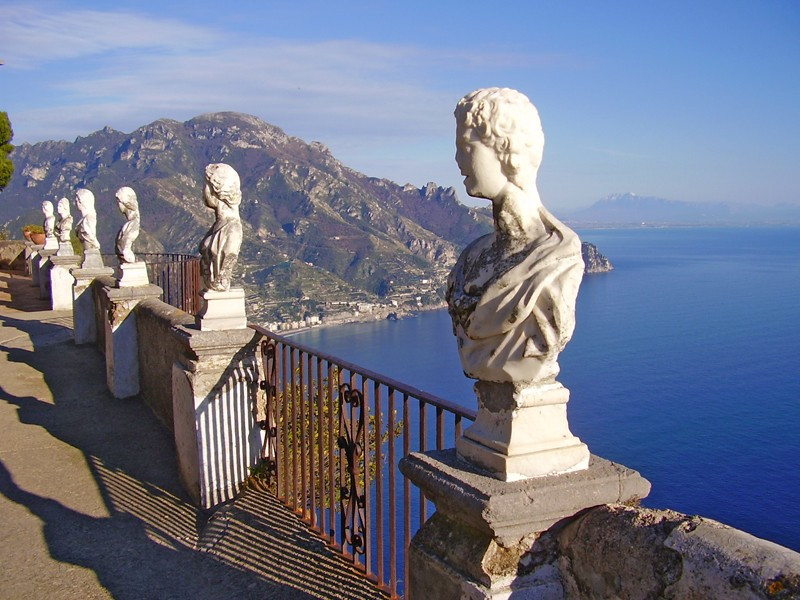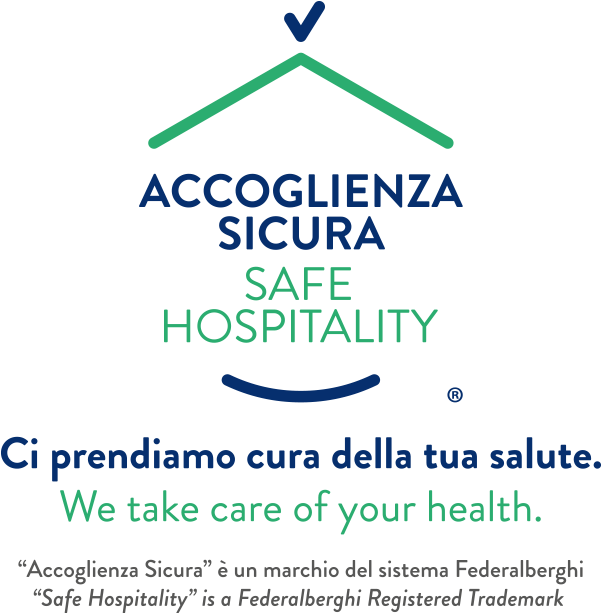Tourist resorts
To reach the other notable tourist towns from Meta is easy. With the local train, the circumvesuviana , which stops at Meta every 20 minutes, one can easily get to where you want to in less than an hour. The archeological sites of Pompei, Oplonti and Herculanum are reachable, or even Naples, to do some shopping. With the SITA bus , you can reach Positano, Amalfi and Ravello.
Sorrento
One can take the bus from Meta and in 15 minutes reach Sorrento. The bus stop is 50 metres from our hotel and the bus stops every 20 minutes. The tickets can be bought at the hotel porter’s desk.
The heart of the Sorrentine Peninsula is its cosmopolitan citizens who at the same time are peaceful, and who blend tastefully their tourist vocations with the typica reservedness of the inhabitants of this place. There are many shops and branded boutiques where one can purchase the latest fashions, restaurants which offer both typical, local dishes and international cuisine.
The historical centre still bears signs of its Roman origins, the cathedral, rebuiltin XV century with its Neogothic front, the Church of Saint Francis of Assisi with the cloistered annex fromthe 1300’s where each summer classical music concerts are held, the Villa Comunale from where there is a spectacular view of the Gulf of Naples.
Isle of Capri
There are ferries and hydrofoils operating daily from the Sorrento port to the splendid Blue Island of Capri, where from the port there one can take the funicular up to the piazzetta where it is obligatory to stop and have a coffee before traipsing along the paved streets and along Via Camerelle partaking in some window-shopping.
At the end of the round, turning to the left one comes upon the path that leads one to Via Tragara, a street from the Roman era, rich with vegetation which hides the gates of the splendid villas one finds along the road. The road ends at a look-out point with a fabulous view over I Faraglioni, the islets that rise from the sea. From the Punta Tragara look-out point, continue along the street which hugs the terrace to the right and one will get to the walk, Pizzolungo, one of the most emotional and spectacular walks that Capri offers.
Along the walks there are benches where one can rest, or stop for a moment at one of the many panoramic look-out points. The route continues until one meets up with some steep, narrow stairs which lead to the Grotta di Matermania, a cave used for ceremonies and sacrificial offerings in pre-Christian times. On leaving the cave follow up the steps and continue to follow the path and one arrives at the Natural Arch, a paleolithic sculpture eroded through time and which has left a natural stone bridge between two rock columns. There is a fairy-tale view from this point.
Pompeii
Completely buried by the lava and lapillus that blasted out from Vesuvius in the eruption of 79 A.D., Pompeii has returned to its former splendour as a result of the excavations that continue still today, and its mysteries and fascinations can be visited throughout the year. Enter into the Archeological Site of Pompeii is like stepping back in time.
One has a sense of being completely immersed in the life and times of that era – to walk the streets, to visit the homes, to discover the artistic details that have been maintained and can be appreciated, to see the calcified bodies of a group of victims in the Garden of the Fugitives – all transport you back in time.
Follow Via dell’Abondanza (Abundance Road) and stop at the House of the Faun, or in Vettii, where you can see the amphitheatre and the gymnasium, or visit the decadent side of Pompeii and the brothel district. Stop and admire the frescoes in the Villa dei Misteri, considered to be a suburban villa as it was built beyond the walls of the city.
At the exit to the excavations, continue for approximately another 1 km to reach the Sanctuary of Beata Vergine del Rosario di Pompei, where one can admire the painting of Della Madonna del Rosario, on the central alter, and venerated by millions of faithfuls from around the world who have paid homage or requested a pardon.
Napoli
Celebrated, extolled, and known around the world, a place of fascination for its visitors, with its splendid colours, sounds, and people. In every corner of the city there is a monument, a piazza, all of which tell a story about its history; it’s a place whose emotion remains in your heart forever.
Leaving from the beautiful Piazza Plebiscito, symbol and centre of the rebirth of the city, one can visit Palazzo Reale, approached from the Museo degli Appartamenti Reali, crossing the vast Courtyard of Honour, and climbing the magnificent Stairs of Honour, one of the most beautiful in Europe – a double ramp with balustrades, and once a pavillion. On arriving at what is the only floor, there are 30 rooms where decorations, clothes and original objects of great value have been conserved. Of notable interest is the national library where one will find the Holiday Apartment, one of the most splendidly rich in Italy because of the vast number of volumes and manuscripts conserved, amongst which is the manuscript by Giacomo Leopardi, “L’Infinito” (Infinity). Museum opening hours »
In front of Palazzo Reale is the Church of Saint Francesco di Paola, with its circular, hemispheric dome, recalls the form of the Pantheon. On the transversal axle of the piazza is the Palazzo della Prefettura and the 7th century Palazzo Salerno, where in the centre are the two equestria statues of Carlo the Third of Bourbon done by Antonio Canova and of Ferdinand the First, done by Antonio Cali`.
On the opposite side is the Teatro San Carlo, one of the oldest lyrical theatres in the world, and which has been under he directorship of some illustrious artistic personages such as Gioacchino Rossini and Gaetano Donizetti. Since 1812 it has also been the hme of the Ballet School of the San Carlo Theatre. Facing the San Carlo Theatre is one of the four entrances to the Galleria Umberto I, which is not only one of the finest shopping districts for Napoletans but for visitors alike. Here there are beautiful shops, bars and restaurants, where one can enjoy a refreshment after many hours of walking the streets and discovering every aspect of this splendid andbewitching city
Positano
Enchanting pearl of the Divine Coast and known throughout the world for its cliff-clinging houses and the many stairs that bring one from the top of the town down the main beach, Spiaggia Grande, and Fornillo Beach.
The characteristic boutiques intrigue visitors, its narrow alleyways and breath-taking panorama’s, its intense night-life and its perfumes that are carried on sea-breezes, all captivate guests who visit this town.
Amalfi
Amalfi where the splendid Arabic-Sicilian Cathedral and the Paradise Cloister, a real jewel of oriental-style architecture, with its four arched porticoes and interlaced supports, large staircase that rises above the piazza and provides a seat for many a visitor to rest and survey the life below.
Many typical, local products from the area , which marry the flavours of the sea and the earth, can be found here too.
Ravello
Ravello, which enchants everyone with its natural scenery and which has been a fountain of inspiration for artists of calibre, such as Boccaccio who writes of town in one of his novels, Wagner,who here found the inspiration for the choreography of the Parsifal and which became his masterpiece, Lina Ertmuller who filmed “Ninfa Plebea” here.
Domenico Rea who penned his book here and was always in Ravello to write the end to his books. The famous villas, Villa Cimbrone with its renamed Infinity Terrace, and Villa Rufolo, where an international classical music festival is held, and its magnificent gardens, where through the years various heads of state, kings, queens and cinematic stars have been entertained, seduced and invited to return to this very-loved place.

